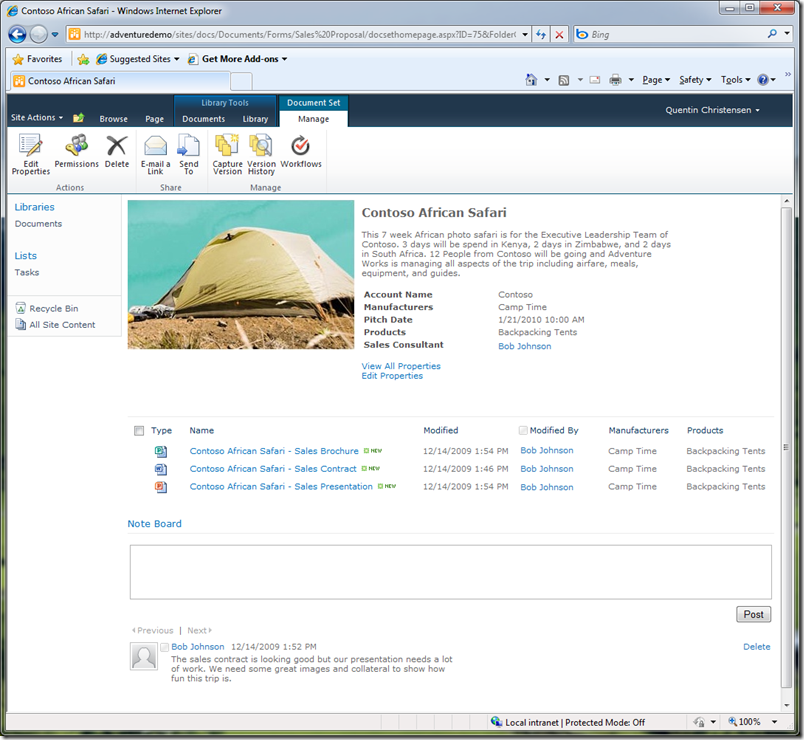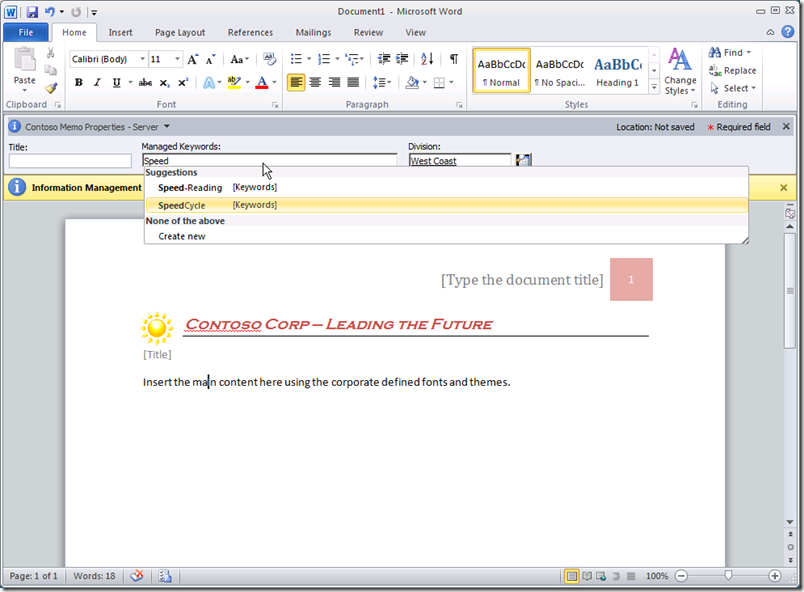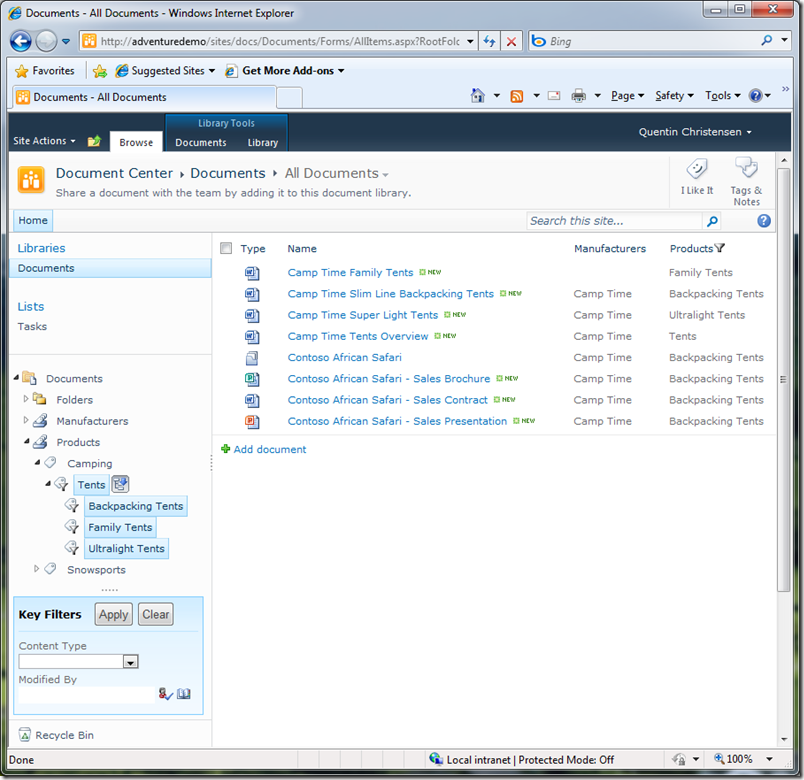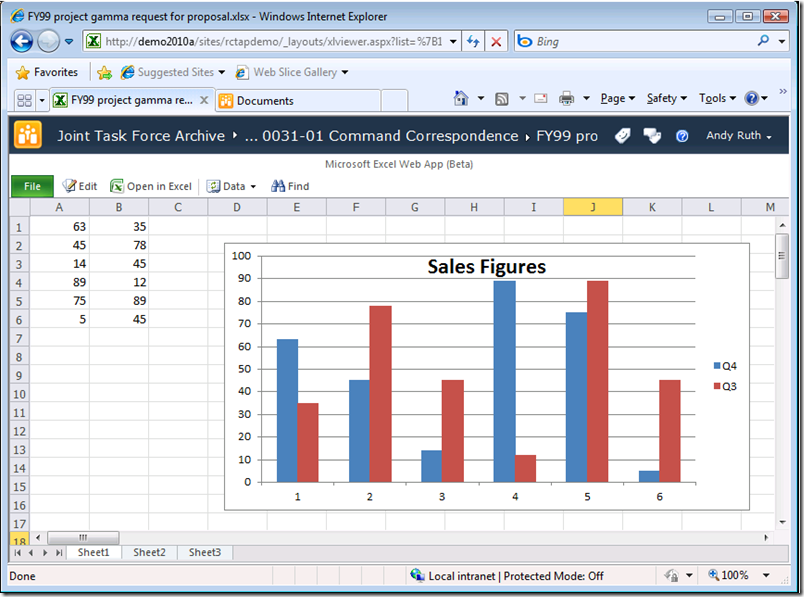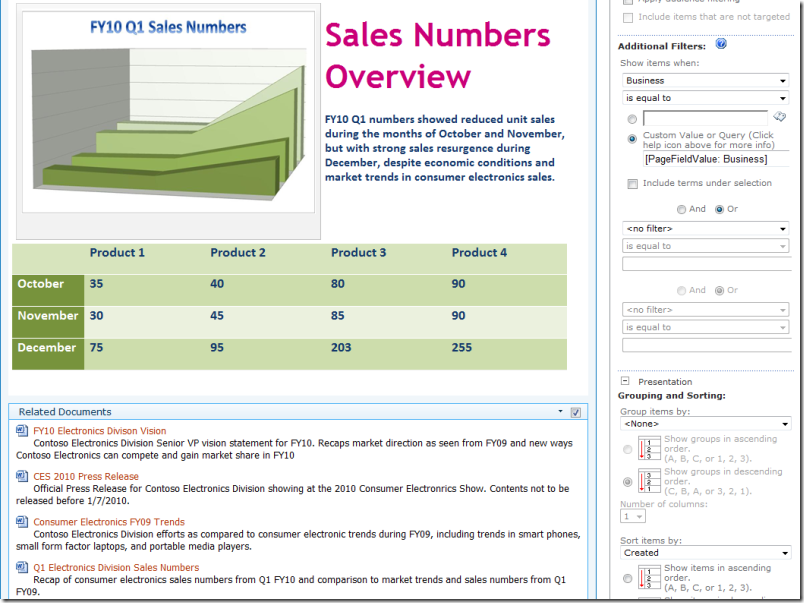Introducing Document Management in SharePoint 2010
Hi everyone. It’s Adam here again – this time I want to talk to you today about another key area of the content management world: Document Management (DM) . Over the next few months, you’ll be hearing from several members of the engineering team about new DM features that help you get the most value out of your document corpus. We’ll also discuss how key early adopters of SharePoint 2010 used new DM features to solve the toughest information governance challenges.
Today, though, I’d like to spend time talking about what the team has learned about the document management space since SharePoint 2007 and take you on a journey through the key tenets that guided our DM vision this release.
Recap: Document Management in SharePoint 2007
SharePoint 2007 was the first release where SharePoint really broke out of its collaboration role and enabled customers to apply structure and management to their document libraries. A lot of the key DM infrastructure was established in that release: Check in/Check Out, Major/Minor Versioning, Per-Item Permissions, Content Types, Workflows, and the Recycle Bin are just a few examples. Of course, all of these features tightly integrated with the Office client applications such as Word, Excel, and PowerPoint to make it simple for end users to interact with the document repository (a core design tenet that carries through in 2010).
Features like these enabled customers to start creating high-value knowledge repositories on SharePoint 2007.
For 2010, we looked to build off of 2007’s gigantic success, and we rallied our designs around three key ideas:
Tenet #1: Manage the unmanaged
As we looked at how our customers were starting to use the 2007 system’s DM features, we noticed an interesting trend: These features were not just part of managed document repository deployments. Indeed, the traditional DM features were getting heavy usage in average collaborative team sites as well. Customers were using them to apply policy and structure as well as gather insights from what otherwise would have been fairly unmanaged places. SharePoint was being using to pull more and more typically unstructured silos into the ECM world.
This is a key insight that really drove our investments in SharePoint 2010. For instance, one of our key new features in SharePoint 2010 is the notion of a Document Set. You can think of a document set as a “folder on steroids.” It allows you to group related documents together so that they share metadata and have a common homepage, workflows, and archival process:
The Welcome Page of a document set is a customizable page that allows users to discover the content in the set, view and sync metadata between items in the set, and manage the set.
When it came time to design this feature, we knew people would want to use it to manage very structured and rigid official processes (e.g. a pharmaceutical company submitting forms to a regulatory agency). But equally important to us was that the feature can be used in a lightweight team site to manage most processes that requires multiple documents to be bound together (e.g. a team that just needs to put together a pitch book/sales proposal that includes a PowerPoint deck, a spreadsheet of costs, and a document that describes the sales pitch).
Enabling the document set feature to be used informally and easily is one way we are expanding the value of ECM in the minds of SharePoint end users.
Tenet #2: Social computing and enterprise metadata are game changers.
As we started to design out the DM feature set for this release, we quickly realized the power of metadata – both structured taxonomies as well as lightweight folksonomies (keywords) – as transformative forces in the document management space. A SharePoint 2010 document repository would need to take full advantage of both concepts.
There are two key principles that enable SharePoint 2010 users to take advantage of metadata. First is on the tagging side: it’s easy for a site to use enterprise wide content types and taxonomies and it’s also simple for a user to tag with them.
SharePoint 2010 offers consistent management of metadata that any SharePoint site can hook in to with virtually no effort. This allows the entire enterprise to be talking the same language. Tangibly, you can do things such as define the list of products you sell once and have that data available in any SharePoint site.
Note how the type-ahead functionality makes it easy for a user to pick a value from this folksonomy. Also note how the West Coast tag was automatically filled out for the user because it was set as the default value for all documents in this library.
The second key principle is how SharePoint takes advantage of these tags. For instance, a SharePoint 2010 document library can be configured to use metadata as a primary navigation pivot. You can think of metadata based navigation as a virtual folder structure that can be used to filter the items in the library:
Instead of navigating by traditional folders, a user filtered the library to the virtual folder that contains just sales materials about Contoso’s tent products.
It’s a virtuous cycle here: Easy metadata entry allows items to be tagged, which can drive navigation. And because users need the metadata to navigate the repository, this incentivizes them to tag the items!
Tenant #3: The browser as a powerful document management application.
SharePoint has always been used for many scenarios, but perhaps it’s known best for two things:
· A best of breed tool for creating web pages and sites
· A place to store, manage, and collaborate on documents
SharePoint 2010 makes a big bet that creating a knowledge management repository requires the merger of both of these worlds. The browser is increasingly becoming the key technology for information workers – both inside the corporate firewall and on the consumer front. Sure, people will always want to download documents to take with them – but they also want to use the browser to interact with the document and see a wealth of context about the document (e.g. metadata, related documents, wiki pages about the document’s topic).
It’s time for the industry to expect any document management system to also be great at creating pages or wikis that add context to the documents’ content. And any system that doesn’t is going to start looking antiquated.
SharePoint 2010 delivers on this vision in a few different ways. First, if you’ve installed the Office Web Apps (licensed as part of the Office 2010 suite), the default click for a document library can be configured to load Office documents in the browser:
Without ever leaving the browser, users can quickly view Office documents stored in SharePoint.
Second, we spent a lot of time this release thinking about how the web content management features can be used in document repositories. For instance, the ever popular Content Query web part can be used to roll up all the documents related to a particular topic:
A content steward might create a page about a particular topic (e.g. a new product). This page includes text about the product, marketing pictures, as well as roll ups of all the documents tagged with the product.
This vision allows you to combine two very powerful aspects of SharePoint into one solution to your organization’s knowledge discovery problem. It’s a merger of an enterprise wiki and a traditional enterprise document repository.
Wrapping up: A lot more to come!
I hope this post gives some context on where we are going with document management in SharePoint 2010 and beyond. Feature wise, we really only hit a few of the many DM features that make up SharePoint 2010 – stay tuned for future posts as we deep dive into a lot more! And feel free to leave comments about what you’d like us to blog about (especially if you’ve downloaded the Beta and given SharePoint 2010 a test drive already!)
Thanks for reading.
Adam Harmetz
Lead Program Manager, Document and Records Management
